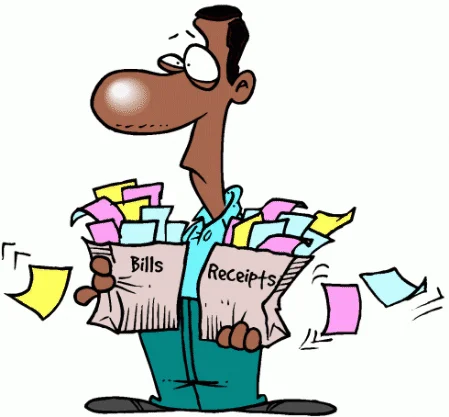Gross Profit Method
Estimating Inventories

The Gross Profit Method uses an estimated Cost Of Goods Sold and/or Gross Profit Rate. Let's first define Gross Profit. Gross Profit is the difference obtained by subtracting Cost Of Goods Sold from Sales.
Gross Profit = Sales - Cost Of Goods Sold
Note: Gross Profit is also often referred to as Gross Margin. The two terms mean exactly the same thing.
Note: Gross Profit is also often referred to as Gross Margin. The two terms mean exactly the same thing.
The Gross Profit Percentage Rate is calculated by dividing the Gross Profit Margin Dollars by Sales Dollars and multiplying by a 100.
- Gross Profit Percentage Rate = Gross Profit Margin Dollars / Sales Dollars x 100
The actual calculations convert the percentage amounts to their decimal amounts by dividing the stated percentage amount by 100.
- Gross Profit Decimal Equivalent Rate = Gross Profit Percentage Rate / 100
The Cost of Goods Sold Percentage Rate is calculated by dividing the Cost Of Goods Sold Dollars by Sales Dollars and multiplying by a 100.
- Cost Percentage Rate = Cost Of Goods Sold Dollars / Sales Dollars x 100
The actual calculations used convert the percentage amounts to their decimal amounts by dividing the stated percentage amount by 100.
- Cost Decimal Equivalent Rate = Cost Percentage Rate / 100
Nothing earth shattering here, we learned about decimals and percentages in elementary school.
The calculations are illustrated in the following table.
Dollars Percentage Calculation Decimal Equivalent
Sales 1,000 100 % (1000/1000) x 100 1.00
Less:Cost Of Goods Sold 750 75 % (750/1000) x 100 .75
Gross Profit 250 25 % (250/1000) x 100 .25
Bean Counter's Warning:
I've run across many small business owners that use a desired Gross Profit (Margin) Percentage to mark up cost in order to calculate the Selling Prices of their products; however, many don't calculate the selling price correctly and end up leaving money on the table.
I've run across many small business owners that use a desired Gross Profit (Margin) Percentage to mark up cost in order to calculate the Selling Prices of their products; however, many don't calculate the selling price correctly and end up leaving money on the table.
Quick Lesson in Correctly Calculating Selling Price
Assumptions:
Desired Gross Profit (Margin) Percentage- 20%
Desired Gross Profit Decimal Equivalent- .20
Product Cost- $1.00
Assumptions:
Desired Gross Profit (Margin) Percentage- 20%
Desired Gross Profit Decimal Equivalent- .20
Product Cost- $1.00
Erroneous Calculation Often Made
Markup Calculated = Cost X Desired Gross Profit Decimal Equivalent
Markup Calculated = $1.00 x .20
Markup Calculated = .20
Calculated Selling Price = Product Cost + Markup Calculated
Calculated Selling Price = $1.20
Markup Calculated = Cost X Desired Gross Profit Decimal Equivalent
Markup Calculated = $1.00 x .20
Markup Calculated = .20
Calculated Selling Price = Product Cost + Markup Calculated
Calculated Selling Price = $1.20
Correct Calculation
Calculated Selling Price = Product Cost / (1 - Desired Gross Profit Decimal Equivalent)
Calculated Selling Price = $1.00 / (1 - .2)
Calculated Selling Price = $1.00 / .8
Calculated Selling Price = $1.25
Calculated Selling Price = Product Cost / (1 - Desired Gross Profit Decimal Equivalent)
Calculated Selling Price = $1.00 / (1 - .2)
Calculated Selling Price = $1.00 / .8
Calculated Selling Price = $1.25
Let's calculate our actual gross profits (margins) and see why the first method of calculating is wrong.
Description Correct Method Wrong Method
Selling Price $1.25 $1.20
Cost $1.00 $1.00
Gross Profit $.25 $.20
Gross Profit % 20.00 % 16.66 %
(.25 / $1.25 x 100) .20 / $1.20 x 100)
If my goal is to obtain a 20 % Gross Profit (Margin) Percentage I should sell my Product for $1.25 not a $1.20. I'm sure none of you have been calculating your prices incorrectly have you ?
Correct Calculation Steps
- Determine Desired Gross Profit Percentage
- Convert the Desired Gross Profit Percentage to a Decimal Gross Profit by dividing by 100
- Calculate The Markup Factor by subtracting the Desired Decimal Gross Profit from 1.
- Calculate Desired Selling Price by dividing Product Cost by the Calculated Markup Factor
Let's do one more sample calculation assuming a product cost of $1.00.
Desired Gross Profit Percentage - 40 %
Decimal Gross Profit = 40/100 =.4
Markup Factor = 1 - .4
Markup Factor = .6
Calculated Desired Selling Price = $1.00 / .6
Calculated Desired Selling Price Needed to Generate a 40% Gross Profit= $1.666 (rounded to $1.67)
Desired Gross Profit Percentage - 40 %
Decimal Gross Profit = 40/100 =.4
Markup Factor = 1 - .4
Markup Factor = .6
Calculated Desired Selling Price = $1.00 / .6
Calculated Desired Selling Price Needed to Generate a 40% Gross Profit= $1.666 (rounded to $1.67)
Just like a TV show interrupts for a commercial, you've had your word from your sponsor, me, now back to Estimating Inventories and our first topic, the Gross Profit Method .
Gross Profit Method
We use the Gross Profit Method to estimate our ending inventory in the following situations:
- A physical count is not feasible.
- As a check of the reasonableness of our inventory amount.
- To prepare interim (monthly, quarterly) financial statements when using the Periodic Inventory Method.
The method is not acceptable for tax (IRS) or in meeting annual financial reporting requirements. In other words, the method is used to prepare reports that are used internally.
The underlying rationale for the Gross Profit Inventory Method is based on the premise that Cost of Goods Sold can be estimated from Sales based on calculations obtained from prior analysis of the normal relationship between selling price and cost of goods sold.
Amounts needed in order to estimate our inventory are:
- Cost Of Goods Available For Sale
Cost Of Beginning Inventory
Cost Of Purchases - Sales
- Estimated Gross Profit Percentage or Cost of Goods Sold Percentage
Estimated Gross Profit Percentage is obtained from an analysis of the previous year's product sales and cost data and arriving at an average gross profit rate (sales minus cost of goods sold divided by sales multiplied by 100).
Assume we obtained the following information from our business records:
Net Purchases $325,450
Sales$ 475,650
Estimated Gross Profit 30%
Estimated Gross Profit
Decimal Equivalent .30
Beginning Inventory $50,550
Option 1 Option 2
Goods Available For Sale $376,000
Beginning Inventory $50,550
Estimate Of Ending Inventory Calculations
- Calculation Of Goods Available Sale
Net Purchases 325,450
Goods Available For Sale $376,000
- Calculation Of Estimated Cost Of Goods Sold
Sales $475,650 Sales $475,650
Less:
Estimated Gross Profit
($475,650 x .30) $142,695
Estimated Gross Profit
($475,650 x .30) $142,695
Estimated Cost Of Goods Sold $332,955
Estimated Cost
Goods Sold $332,955
($475,650 x .70)
($475,650 x .70)
- Calculation Of Ending Inventory
Less:
Estimated Cost Of Goods Sold $332,955
Estimated Cost Of Goods Sold $332,955
Estimated Ending Inventory $43,045
Calculations Presented As One Schedule
Net Purchases 325,450
Goods Available For Sale $475,650
Less:
Estimated Cost Of Goods Sold $332,955
Estimated Cost Of Goods Sold $332,955
Estimated Ending Inventory $43,045
Considerations when performing the calculations:
- Adjust the rate for changes in the relationship between gross profit, cost, and sales such as adding new product lines.
- Consider calculating and using different gross profit rates for each type of inventory or product groups with varying gross margins.
- Consider using an average gross profit rate calculated based on several prior periods instead of just the prior year's information.
What's Next ?
Retail Inventory Method

